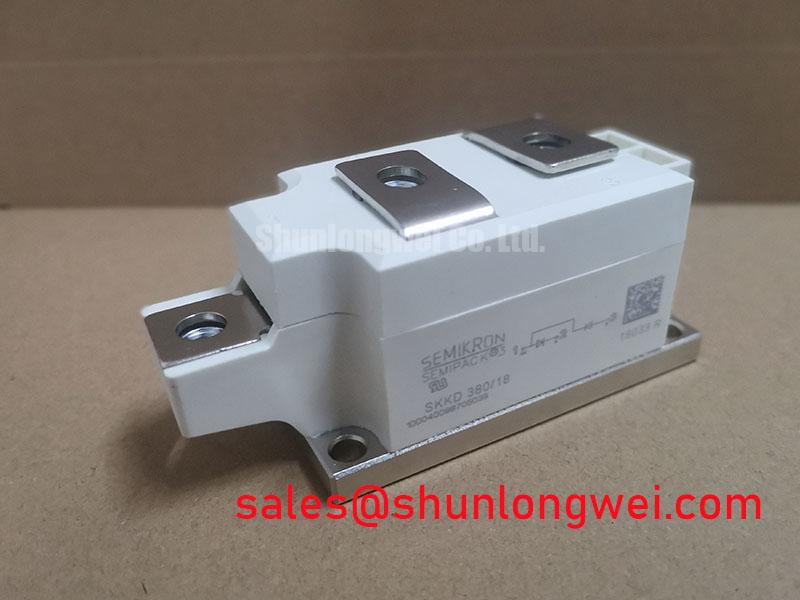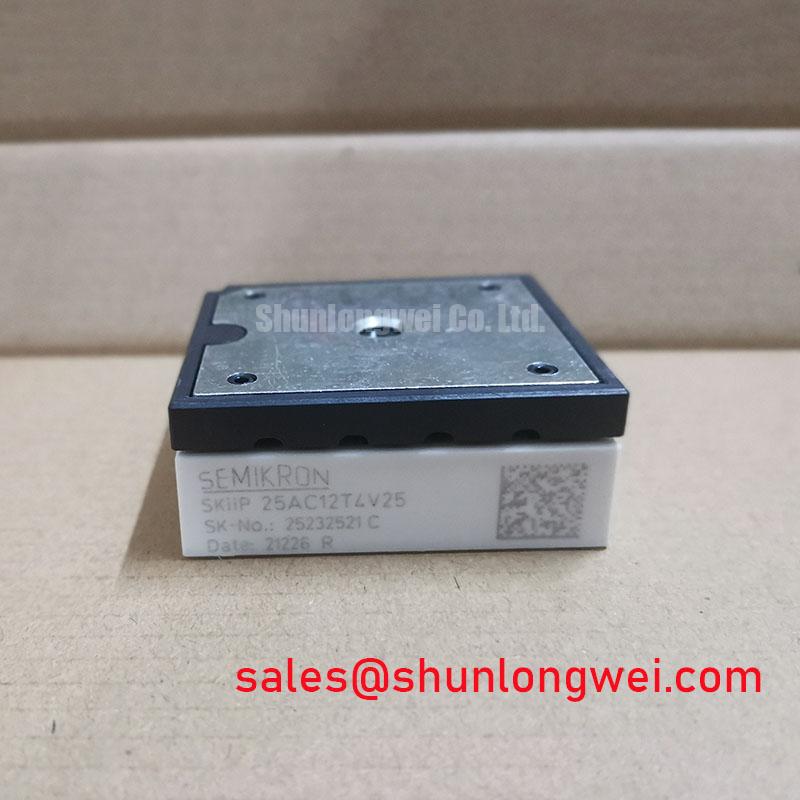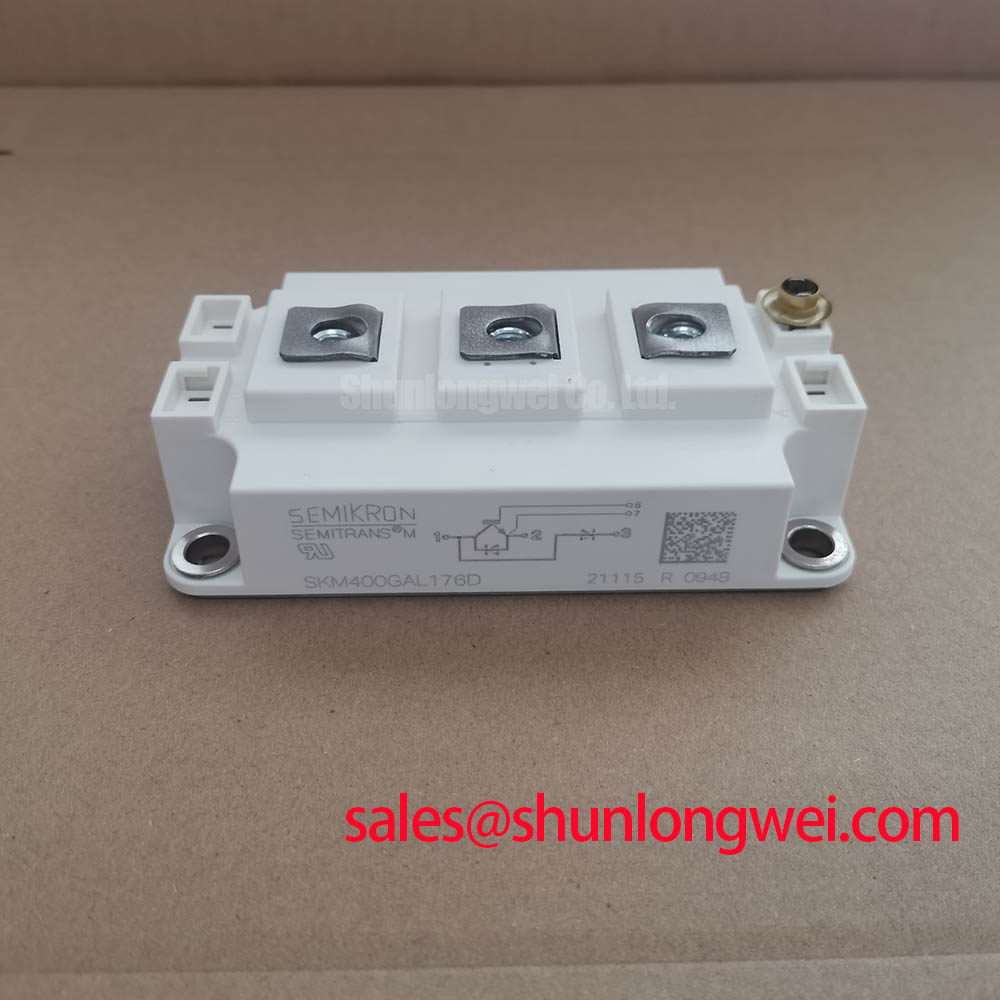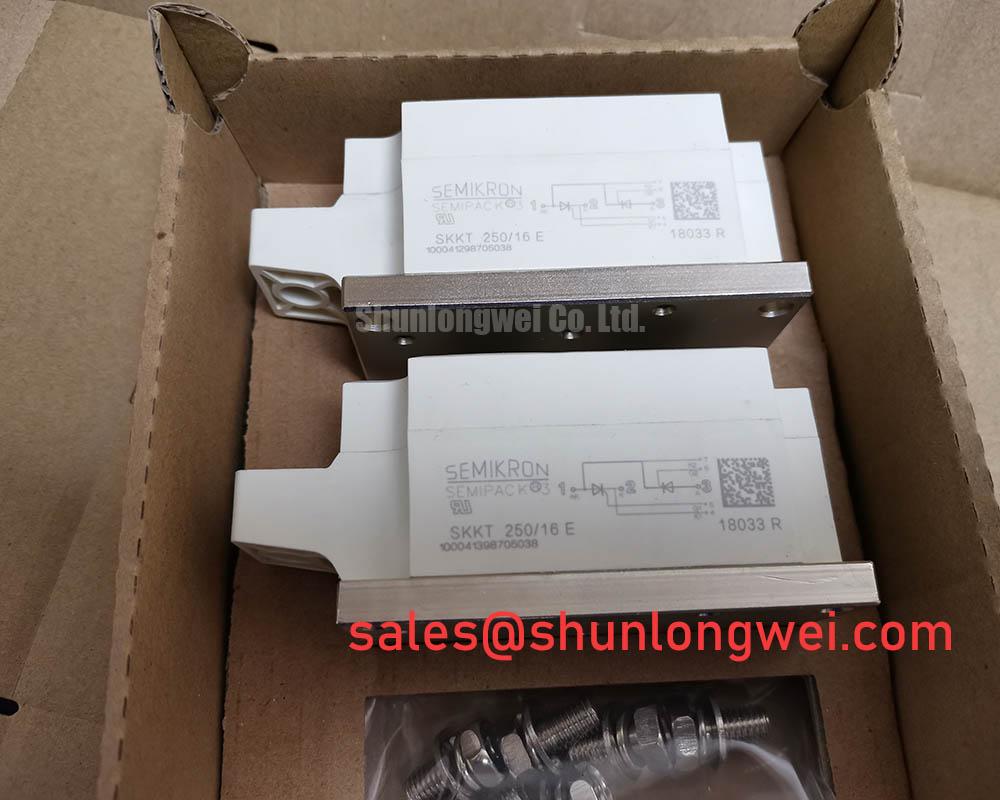Semikron SKKT 162/16E | Rugged Thyristor Module for High-Current Power Control
Product Highlights: Engineered for Reliability
The Semikron SKKT 162/16E is a high-performance thyristor module, also known as a Silicon Controlled Rectifier (SCR) module, designed for demanding power control applications. Housed in the industry-proven SEMIPACK® 2 package, this device offers exceptional durability and thermal efficiency. It is engineered not for high-frequency switching, but for robust, line-frequency power regulation where reliability and surge current capability are paramount.
- Configuration: Dual Thyristor (SCR) configuration for AC control or controlled rectifier bridges.
- Voltage and Current Rating: 1600V blocking voltage and a 160A average on-state current.
- Core Technology: Features glass passivated thyristor chips for superior voltage stability and long-term reliability.
- Thermal Performance: Utilizes an aluminium oxide ceramic (Al2O3) baseplate for excellent electrical isolation and efficient heat transfer.
- Primary Applications: Ideal for AC controllers, motor soft-starters, controlled DC power supplies, and industrial welding equipment.
Key Parameter Overview
The following specifications are critical for system design and integration. For a comprehensive list of characteristics and performance curves, you can Download the SKKT 162/16E Datasheet.
| Parameter | Value |
|---|---|
| Repetitive Peak Off-State Voltage (VDRM, VRRM) | 1600 V |
| Average On-State Current (ITAV @ Tcase=85°C) | 160 A |
| RMS On-State Current (ITRMS) | 250 A |
| Surge On-State Current (ITSM, 10 ms, 50 Hz) | 3300 A |
| Threshold Voltage (VT0) | 0.85 V |
| On-State Slope Resistance (rT) | 0.9 mΩ |
| Thermal Resistance, Junction to Case (Rth(j-c)) | 0.14 °C/W (per thyristor) |
| Operating Junction Temperature (Tvj) | -40 to +125 °C |
Technical Deep Dive: The Foundation of Durability
The exceptional reliability of the Semikron SKKT 162/16E stems from two core design principles. Firstly, the use of glass passivated thyristor chips is crucial. This process involves applying a layer of glass over the silicon die's junction termination, hermetically sealing it from ambient moisture and contaminants. This directly translates to stable blocking characteristics over the module's entire lifetime and prevents degradation that can lead to premature failure in harsh industrial settings. Secondly, the SEMIPACK® 2 package employs hard-soldered joints between the die and the Direct Copper Bonded (DCB) substrate. Unlike wire bonds, these joints provide a robust, large-area connection that significantly enhances the module's power cycling capability and resilience to mechanical shock and vibration.
Application Scenarios & Engineering Value
The specific characteristics of the SKKT 162/16E make it the ideal choice for several key applications:
- Motor Soft-Starters: The module's massive surge current rating (ITSM of 3300A) allows it to easily withstand the heavy inrush currents typical of large AC induction motor start-ups, preventing voltage dips on the supply line and reducing mechanical stress on the drivetrain.
- Controlled Rectifiers: In applications like industrial battery chargers and electroplating power supplies, two SKKT 162/16E modules can be configured into a fully controlled single-phase bridge. Their precise gate control and robust nature ensure reliable and regulated DC output.
- Industrial Welding: The module's rugged construction and high current handling are essential for phase-controlled welding power supplies, where it must endure repetitive, high-current pulses while maintaining stable operation.
Expert Q&A: Making the Right Design Choice
When should I choose this thyristor module over an IGBT?
This is a critical system-level decision. You choose a thyristor module like the SKKT 162/16E for high-power, low-frequency (i.e., line-frequency 50/60Hz) phase-angle control applications. Its strength lies in its ruggedness, simplicity of control, and high surge current capability. In contrast, you would select from our range of IGBT modules for high-frequency switching applications (typically >1 kHz) like variable frequency drives (VFDs), solar inverters, and modern switch-mode power supplies (SMPS), where efficiency and fast switching are the primary goals.
What is the most critical factor for ensuring the reliability of this module in my design?
Without question, it is thermal management. While the module boasts a low thermal resistance, its performance and lifespan are directly tied to how effectively you can dissipate heat from its baseplate. Proper selection of a heatsink, the correct application of a high-quality Thermal Interface Material (TIM), and ensuring adequate mounting pressure are non-negotiable. For a deeper understanding of these principles, our guide on unlocking thermal performance provides valuable insights applicable to all power modules. If you have specific thermal simulation needs for your application, please contact our technical team for support.
















